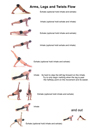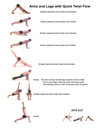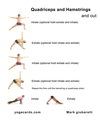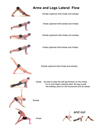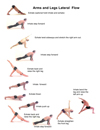YOGA POSTURES ![]() ASANA
ASANA ![]() YOGA POSES
YOGA POSES ![]() YOGA POSITIONS
YOGA POSITIONS
Tadasana ![]() Downward Dog
Downward Dog ![]() Cobra pose
Cobra pose ![]() Headstand
Headstand ![]() Shoulderstand
Shoulderstand ![]() Warrior 1 pose
Warrior 1 pose ![]() Warrior 2 pose
Warrior 2 pose ![]() Triangle pose
Triangle pose ![]() Half Moon pose
Half Moon pose ![]() child pose
child pose ![]() Cat Pose
Cat Pose
Downward Facing Dog Pose – Adho Mukha Svanasana
Translation: Downward Facing Dog
![]()

Stretch the arms away from the body keeping them aligned with the spine.
![]()
You can push through the first finger or the middle finger.
![]()
Have the heels hip width apart and the legs straight.
![]()
Push through the heels and up through the tailbone in opposing direction s.
![]()
The top of the head can be pointing down towards the mat or in line with the direction of force through the arms.
![]()
Raise the navel upwards towards the chest. This will straighten the lower back.
![]()
Common faults in the yoga posture.
The force is placed on the outside of the hands. This can be corrected by pushing through the first finger or by lifting the pinky finger.
![]()
The Upper back curls. This can be prevented by lengthening the muscles under the armpits.
![]()
The lower back curls. The hamstrings and calf muscles must be flexible or they pull the tailbone downward. Work on there flexibility and the lower back will straighten.
![]()
The heels turn inward rotating the legs. This can be corrected by glancing at the feet for a moment when entering the Downward Dog Pose. Then there alignment can be corrected.
![]()
The wrists hurt. Try to create space between the wrists and the arms. You may achieve this easier by pressing the fingers into the mat. This will engage muscles that slightly list the pressure off the palms.
![]()
Benefits
This pose increases the strength and flexibility of the shoulders. The hamstrings , calf muscles (gastrocnemius and the soleus), and Achilles tendons are all stretched.
![]()
Healing effects
Plantar Fasciitis. This pose can help stretch major muscles that cause pain in the disorder of the feet. Very often this will relieve or cure pain.
![]()
Shoulder injury. This pose can help you regain shoulder strength. However if the shoulder or the injury are not capable of this stretch it should not be attempted as it may aggravate the problem.
![]()
This pose can have a negative effect if the body suffers from excess acidity. It is always good to flush the acid by drinking plenty of water.
See a printable home yoga sequence with Downward Dog pose.
See Pigeon Flow yoga sequences.
Vinyasa Yoga postures to transition from and to:
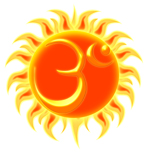
![]()
Yoga Teacher Tips
Instruct on the simple things first. The legs are often not straightened and poor alignment is often present in the arms, shoulders and lower back. A simple instruction that includes the lengthening and line from the hands to the hips can be very beneficial. Then the weight and force on the hands and positioning and rotation in the legs can be mentioned. Weight falls on the outside of the hands and the heels usually turn in too much.
![]()
Energy is traveling both up and back through the tailbone. The direction becomes higher when flexibility is gained.
![]()
Always mention the breath that accompanies the movement into the pose. It may be more beneficial to mention this before the action is instructed. When we Yawn the hands and arms are naturally stretched out. It is done with an exhalation. For this reason it may be best to enter Downward Facing Dog with an exhalation. On some occasions though it may work better into your flow with an inhalation.
“Downward Facing Dog is often overused in Yoga classes. This can lead to discomfort, wrist pain, arm fatigue and lack of proper blood flow. If you are going to enter this pose many times in class enter it for less time each time and the sequence you present will be a more enjoyable to practice. You can always offer Child Pose as a rest option if you like to hold this pose and don’t want to inflict too much suffering upon practitioners.”
![]()


























